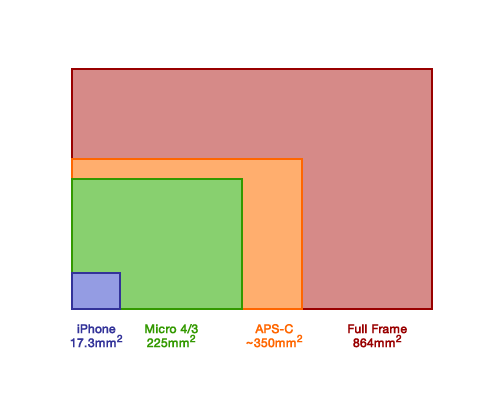#computer fundamentals course details
Explore tagged Tumblr posts
Text
Constant Companions Closeup #11: MACHINE LOVE
youtube
(also on bandcamp and spotify!)
Welcome back to the Constant Companions Closeups - a series of in-depth dives into the songs off of my latest album, Constant Companions! Yesterday was the title track, My Darling, My Companion, which means today is the final track on the album - a song about the truths that lay in hiding within artifice, and a computer falling in love - Machine Love!
Before we get started on this particularly long closeup - I'll be doing a follow-up post after this one, answering various miscellaneous questions I've gotten over the course of writing these! If you've got anything you wanna hear more from me about, album-related or otherwise, feel free to reply to this post or send me an ask! It may very well end up part of the bonus closeup :~)
---
Let's circle back to the very first track, Dyad.
In that track's closeup, I mentioned the main sonic touchstones of this release relative to my previous ones being guitars and vocal synths. The whole guitar rock thing I think I've gone into detail enough about, what with all the inspirations I've rattled off in other posts, but there likely is still a burning question for some long-time listeners.
Why vocal synths? Why am I not singing on like half of this album? I thought you were a singer, Jamie Paige, so what is this Hatsune Miku robot Vocaloid crap?
Truth be told, the Vocaloid scene and community has always been a massive source of inspiration for me. So much of my favorite music ever, music that inspires me or touches my heart or makes me go apeshit, has been sung by synthesized vocalists in a language I don't even speak. I grew up with it, and it's grown up with me - music just as intricate, mind-boggling, twisted, fun, and ridiculously creative is being put out every single day by vocal synth producers, and nowadays it's coming from English speaking musicians in droves!
Before this year began, I'd made at least one major contribution to the culture, but in spite of my genuine adoration of everything vocal synth related, I felt like I was just looking in from the other side. Caught between worlds, existing outside of any communities, simply gesturing vaguely towards what I wanted to do.
But I wanted more! I wanted to make the same kinds of things that stirred my heart and made me want to write! I wanted to sing with those same voices! I wanted it to be true - to be like you!
---
I won't lie to you and tell you Kasane Teto has always been my favorite vocal synth. That title used to go to GUMI, and in general, I wasn't particularly attached to any UTAU voicebanks as a younger vocal synth fan. (Nowadays, I genuinely open up OpenUTAU just as much as SynthV because I've fallen deeply in love with Adachi Rei, but that's a story for my next album.) Obviously, I knew of Teto, and found her presence in things like Triple Baka delightful, but for the most part, she was mostly something of an oddity, a wayward piece of vocal synth history that had her Fans like any other.
However, there was one Teto song I've been inexplicably attached to since the moment I first heard it - Song of the Eared Robot, by nwp8861. I was introduced via this particular cover, which I love, but I quickly gravitated to the original. Something about the warbly, childish nature of her very first voicebank, the ambitiously orchestrated and unabashedly digital instrumental, the lyrics referencing fundamental frequencies and Markov chains and compiling code all just spoke to me!
That song stuck with me, laying in a part of my heart that had been collecting dust, all the way to April of 2023.
Now, yes, Teto wasn't always my favorite, and I had other vocal synths I was attached to, but I don't live under a rock, and I still understood how monumental the announcement of Kasane Teto's Synth V voicebank was - to the point that I interrupted a call full of FFXIV-playing friends who knew barely anything about vocal synths and gave them an impromptu TED talk because I was so excited.

(An excerpt of a summary of that night's events, written the morning after. i was up my own ass a little bit but in my defense Kasane Teto had just been announced for Synthesizer V)
I was watching, in real time, a dream made manifest. It's literally one of the Bits with Teto! That she'd be a Vocaloid one day too! And here she was, on the fan favorite engine, sounding genuinely fucking incredible. Especially in hindsight, it's such a beautiful and perfect twist of fate for her.
I saw myself in her. A weird little outcast, explosively reborn and thrust straight into a community's open arms with love. I wanted it to be true - To be like that, too.
It didn't fully hit until later, hearing another cover of a song I'd almost forgotten.
Machine Love, my love letter to the entire world of unbridled creativity and artistry surrounding vocal synths filtered through one sentimental little song, was fully written by the start of May, maybe 4 days after I had gotten my hands on Teto SV and long before a certain compilation album was even a glint in my eye.
If you haven't heard DAEMON/DOLL yet, you really, really, really should go listen to it - yes, I mastered this album, many of my friends and collaborators are featured, and I have two entire songs on it, but I genuinely mean it when I say I believe it's some of the best fucking music that's come out this year in general. In many respects, it also feels like a companion (hah) to Constant Companions.
I had finished writing Machine Love by this point, but it was working on this album in its entirety - discovering artists like Anh Duy, Eggtan, and beat_shobon through it, and hearing everyone in top form making this twin-drilled chimera fucker sing her heart out - that not only made me confident in my decision to go down this artistic path, but that made me fall completely in love with Kasane Teto. And honestly, how could I not? She feels like a microcosm of everything that makes vocal synths so special, this community of creatives all leaving their marks and touchstones along the trail of a great big shared folk mythos. Yeah, maybe the folk hero we're all collectively mythologizing is an anime girl, but yknow maybe Odysseus could take some branding cues from hatsune miku idfk
Basically, even if he says he wants to kill me, I owe fucking everything to rice for inviting me to work on DAEMON/DOLL.

---
On that note, my vision for Machine Love's MV was pretty clear from the beginning.
youtube

the actual factual setup for the above shot, which was done entirely in-camera with my laptop, a tv, and two video files manually synced using VLC
The fundamental idea was always there - live-action shots of animation playing back on various screens, edited together to feel somewhat seamless. However, I really struggled with what exactly was going to be on said screens for a while; Big commissions were very far out of my budget, but I knew this song needed something grandiose.
Ultimately, what I arrived at was exactly the kind of scrappy, DIY bullshit it was always meant to be.

I asked my Twitter mutuals for help. And spent a couple months in Final Cut Pro and Apple Motion hell turning all the Teto art I got into a bunch of tiny little mini MVs, some of them parodying real vocal synth MVs, some of simply just evocative of vocal synth MVs, all of them painstakingly edited by yours truly and filmed with the help of some friends over the next couple months across two states and many more cities just to be painstakingly edited and synced up again by yours truly.
THE NEXT MV I DO WILL BE SMALLER IN SCOPE
---
And with that, I believe that's the album!
There's a reason it ends with Machine Love, and not with the title track. I do think that in some respects My Darling, My Companion would have made a better closer, but that song only really resolves one of the thematic strands running through the album.
There isn't really a definitive answer to the specific question "Baby, do you know what you wanna hear?", but it evokes a theme running through the entire album - wanting something, knowing that you want something, and simply needing to find the courage to do it or say it or be it. My Darling, My Companion is in many ways a declaration of intent, an acceptance of what needs to happen, but Machine Love, to me, is that action being done. The words being said!
And now, if I may give this a somewhat selfish tint - with the explosive response my works from this album have gotten, my contributions to things like DAEMON/DOLL and Flavor Foley, the collaborations I've done and that I still have in the pipeline, the friends I've made and the community I've found a spot for myself in, and the newfound voices that I can lay my heart bare with -
Well, shit, I know what I wanna hear, and I've gotten to hear it. I'm a vocaloP. It's real!
Thank you all so goddamn much for reading and listening. I'll see you back here either tomorrow or Monday for the bonus AMA post thing!! Make art and be gay, motherfuckers.
❤️💚
212 notes
·
View notes
Text
Frogman's Camera Buying Guide
A few weeks ago someone asked if I could recommend an interchangeable lens camera (ILC) to supplement their smartphone photos and hopefully get better pictures of important things like vacations and pets.
I decided to go very extra with my response and due to that... I'm still not finished with it.
I'm worried I am letting this person down because they did not ask for a giant post explaining every detail about cameras in the history of forever.
So I am going to do a camera recommendation post without as much explanation and hopefully I can finish the giant post at some point in the near future.
If you want to take better pictures you are probably going to need a camera with a decent sized sensor, a fast lens, a tripod, and a flash.
The bigger sensor gives you more dynamic range so you can capture brighter and darker things in the photo.
A fast lens has a giant hole in the front that lets in a ton of light. That hole is called the aperture and the bigger it is, the better your photos in dark environments will be. So you will want something that does f/1.8 or f/1.4 (lower f-stop number = bigger hole = more light). This can also help you get a lot of cool background blur.
A tripod will help get you longer exposures without any blur from camera shake. Especially good for landscape photos.
And a flash is for taking photos of pets and other moving subjects when you are indoors and don't have a lot of light. A flash is an absolute game changer for indoor photos.
HOWEVER, never point it directly at your subject.
Point it at a large white ceiling or wall. The flash happens so fast that it freezes motion. It is how I got all of my indoor photos of Otis.
Here he was playing and being rambunctious and he is not blurry.


I used no special settings. I just stuck on a flash and pointed it at the ceiling and suddenly sheep are sticking to things.
Oh, and one other huge benefit of using a flash... you can take much better photos of pets with dark fur. So if you have a cute little void in your home, a flash can help you capture detail in their fur.


Just lift the shadow slider in your image editor and that beautiful fur will reveal itself.
If you get an ETTL or TTL flash, it will output the correct amount of light automatically. You can literally just put your camera in automatic mode, aim the flash at the ceiling, and press the shutter button.
Before I talk about recommendations I want to make one thing very clear.
GETTING A GIANT CAMERA WILL NOT AUTOMATICALLY GIVE YOU BETTER PHOTOS.
Aside from my flash aimed at the ceiling trick, a big boy camera is not a magic solution for better photos. In some cases, you might actually get *worse* photos than your smartphone. You need to learn the basic fundamentals of photography and you also need to learn some basic photo editing skills.
Smartphones employ powerful algorithms and computational processes to make every photo you take look as good as possible.
ILCs say, "Here is your RAW data, you figure out the rest."
You don't have to become an expert, but if you watch this free 6 hour photography course, that will ensure you have the knowledge needed to improve your photos.
youtube
Okay, let's get into the nitty gritty of buying a nice new old ILC.
If you are on a tight budget and cannot afford a fancy mirrorless camera, I would highly suggest a used DSLR. You can get them for very reasonable prices. And unlike just about every other modern technological gadget, cameras and lenses are built to last for decades. So I have no qualms about recommending used photography gear.
However, I do highly recommend using either KEH or MPB, as they have a long trial period and decent customer service. If something goes awry with your used gear, KEH has a 180 day warranty and MPB has a 6 month warranty. So there is much less of a risk than eBay or Facebook Marketplace. You pay a bit of overhead, but the piece of mind is worth it.
Before I start my recommendations I want to quickly explain the difference between APS-C and Full Frame camera bodies. (For brevity's sake I am going to omit Micro Four Thirds bodies as they are not typically geared toward beginner photography.)

APS-C has a "crop" sensor. It is a bit smaller than full frame and does not perform as well in low light (more noise). However these bodies are cheaper and can still produce great photos. You can see above the sensor is still significantly larger than a smartphone. APS-C adds a 1.5x zoom to all lenses. This can be annoying in small spaces but advantageous for outdoor photography like wildlife and sports. You can use full frame lenses on a crop sensor body (within the same brand). APS-C lenses are usually cheaper but of lower quality.
Full frame has a larger sensor that will give you less noise in low light. It is also much easier to get background blur. Full frame also allows you to work in more cramped spaces. You *cannot* use APS-C lenses on a full frame body. However, the lenses meant for full frame cameras tend to be better quality in general.
If you can save up a little more and get a full frame body, I would recommend it. These bodies used to be geared more toward professional use, but since mirrorless cameras became popular, used full frame DSLRs have become much more accessible to those on a budget. Full frame cameras make it easier to get better results in challenging circumstances. And challenging conditions are really the main area where ILCs still kick a smartphone's ass.
For tight budgets I would recommend the following...
Canon or Nikon APS-C DSLR camera body
50mm f/1.8 lens (Nifty Fifty)
18-55mm APS-C lens (good for landscapes and portraits)
Yongnuo ETTL Flash
There are lenses called "superzooms" which can go from (as an example) 18-200mm or 70-300mm and other crazy focal lengths. That sounds fantastic and very versatile... but these are usually utter shite. You may be tempted to get one of these lenses hoping it can do everything you need, but there are no free lunches in lens land. Unless you are spending many thousands of dollars, the wider the focal range, the worse the lens will be.
When you stick to the 18-55mm range, you can be assured the images will be decent. And if you find yourself really needing a telephoto lens, you can save up and add it to your collection later on. The 18-55 will give you wide angle for landscapes all the way to slightly telephoto for portraits and moderately close wildlife. This lens cannot be used indoors or at night without a flash. Which is why I recommend the Nifty Fifty for that purpose. $100 for a moderately sharp low light lens is a no brainer.
Also, stick to Canon, Nikon, Sigma, or Tamron lenses. You can try exotic 3rd party lens brands when you know more what you are doing. And always make sure the lens has autofocus before buying.
It's hard to give you exact recommendations as used items are not reliably in stock. So I'm going to show you an example of the above, but I am not necessarily saying you should buy this *exact* combination. You might be able to get something similar with Nikon as well.
Canon 60D APS-C DSLR

50mm f/1.8 lens

Canon 18-55mm APS-C lens (EF-S mount)

Yongnuo TTL Flash

(I wouldn't recommend getting a used flash, as the Yongnuo is already a great price and you can't know if someone used the flash 100,000 times or 20 times.)
Altogether that is about $500. You can start with the 60D and the 50mm Nifty Fifty for $330 and add on the other two items later on.
My recommended full frame setup...
Full frame Canon or Nikon DSLR body
50mm f/1.8 lens (same as before)
24-70mm full frame zoom lens (full frame equivalent to 18-55mm)
ETTL Yongnuo flash (same as before)
And an example from KEH might be...
Canon 6D Full Frame DSLR


Canon 50mm f/1.8 Lens

Sigma 24-70mm Full Frame Zoom lens (EF mount)

Yonguo ETTL Flash

And that would be about $800 total.
Again, you can start with just the camera and 50mm lens and add the other items later. So invest $500 initially and go from there.
And just to give a Nikon example as well...
Nikon D600 Full Frame DSLR

Nikon 50mm f/1.8 Lens

Tamron 24-70mm


Yonguo ETTL Flash (Nikon version)

I highly recommend researching any camera body and lens before purchase. I can vouch for the items above, but you should definitely check out some YouTube videos before buying.
All of the stuff on KEH and MBP is marked down in price for aesthetic reasons. They do test everything to make sure it is functional. If you care if the camera or lens looks pristine, it will cost a little extra. But if you don't mind if it is beat to hell, you can save some money. Ugly or not, you will get the same photos out of the gear. As I said, photography stuff is built to last for a long time. Almost all repairs are due to user damage and not defects. And usually defects manifest when the product is brand new.
Oh, I forgot about the tripod!
Amazon's $35 tripod is surprisingly decent. It even got a good review on a very picky tripod review site. I recommend starting with this and then upgrading when you know more what you need out of a tripod.
Amazon 60 inch Tripod

I worry I'm leaving out a lot of important information, but hopefully I can expand in the other post I am working on.
That said, if anyone is thinking of buying a camera and you are not sure about the items you selected, please feel free to message me and I will help you assess your choices. Please make sure you include a budget range when asking for buying advice.
I hope that helps. I will try to finish the more in depth post soon. And it will include tips for how to get better photos from your smartphone if you cannot afford an ILC at the moment.
Further resources...
Recipe for Landscape Photos Froggie's Encyclopedia of Lens Terms
204 notes
·
View notes
Text
Political plot: where to start
Well, some people would try to seem wise and say something like ‘at the beginning’. Here we are, then, trying to figure out what that beginning would be.
Before we dive head first into perfecting your plot, there's some important nuances that you should decide on. And you should keep them in your head through the entire process of planning your plot. So the question you should find the answer to is the following:
Why do you want to write it, what do you want to tell your reader with it?
That's important lest you lose the thread and become caught up in the excitement of intrigues, power plays and winning moves. Because then you risk overcomplicating the plot and creating too many unnecessary tangents that wouldn't make sense in the end. Or worse: you’ll pause at some point, look back and feel lost at what you should do with all that mess.
So yeah, the reason your plot is what it is.
It doesn't have to be something socially important (like the dangers of introducing computers to governing to guarantee impartiality and equality). Even if you think that your reasons are too simple or silly, they exist and they are important to you. That's all that matters. You don't have to share your reasons with other people, just keep them in mind to ensure that the story progresses as it should.
Then comes another important detail.
You have to decide whether it's your central plot line or your subplot. And it's not because a central plot demands more attention and knowledge than a subplot, though some might think like that. But there is a fundamental difference between the two. For your subplots you have to decide how they are connected to the main plot. So, there's one more point for you to think through.
The first option obviously means that your story actually is about politics.
It doesn't have to be only about politics, stories with multilayer plots and complex problems are as interesting as the ones featuring single focus. So, no need to make everything a political move. But you will have to remember that politics are in the centre.
One of the most well-known examples of political plots is George Martin’s ‘Game of Thrones’ series. Now, I won't comment on the quality of it, but the fact remains - the story is about the struggle over the throne that is the symbol of the ultimate power. Other storylines are tied to this one. Even the supernatural subplot with Others and the Long Night is somewhat dependent on the political turmoil of the Seven Kingdoms.
What does that mean? Only that most (probably not all) of your subplots will be to some point defined by the main plot or coloured by it. Like, marriage of two people loving each other isn't only marriage now, but a political alliance, obstacle on the path to power, or a hidden danger. Possibilities are numerous. Also, not everything has to be touched by your political plot, but that should be an exception, not a rule.
The second option is writing a political subplot. It obviously must have some importance to the story (why would it be there otherwise?) and some ties to the main plot.
A subplot can be:
a way to better unfold a character’s personality and/or history (the storyline of Ciri’s origin from Witcher books series)
a component of some bigger conflict (Landsmeet quest in Dragon Age: Origin);
a background to the main story (pretty much most books written by Remark);
a side of the complex and multifaceted central plot (like in Harry Potter ideological side is the part of struggle between good and evil).
There are, of course, other possibilities of political subplots. You only need to think up the thing you want and tie it logically to your main plot. Remember: you are the author. If you decide that some action, behaviour or other element of the story is political and you show it to your readers then everything is as you say.
Now, when you decide why you have this specific plot, you must understand that politics is all about power and influence. It might be not the political power in its pure form (like a throne, a post of president or conquering a neighbouring tribe), but it's power nonetheless. Each of your characters wants it, needs it for some reason or is in possession of it, and events unfold around it.
And if you went for a political subplot instead, you should determine what parts are relevant for your story but still trace the entire line at least in your head. Because if some attentive reader notices that something doesn't add up, you’ll have to fend off a series of critiques, not always kind. Slacking off isn't worth it.
Next up, we’re delving a little deeper into political worldbuilding, going over the main elements you’ll have to account for. Those are all things that will be important in your plotting. How the political system is built and functions. Which political institutions can and cannot coexist. What place political culture has in the system and what are sociopolitical implications in everyday behaviour.
Until the next time. Stay safe.
30 notes
·
View notes
Text
I've been called argumentative a lot.
when I am trying to have a conversation with someone about a topic, something where our opinions differ, people tend to think I am being mean or talking down or something when that is definitely not my intent. they think I *need* to be right but I definitely do not. I think it's an autism thing.
I think it comes down to a fundamental misunderstanding, or at least not a shared understanding, of what a conversation is and what my intent is. when I am having a discussion that is more serious, or sometimes in the past when I was a manager teaching something, my goal is clear communication.
I see communication like this; it is a very inefficient way to download a file into someone else's head. I have this idea in my head that I want to get into your head, but I want to make sure that the file gets transferred accurately without corruption. in order to do that, we have a conversation. I start giving you information about what I'm talking about, you tell me what you understand about that, I notice when you may have misunderstood something, so I clarify by giving more information. we go back and forth like this until the file has transferred sucessfully, it's kinda like if you were trying to download a file to a computer but mainly through using error correction rather than sending the data first.
I think this is where people tend to get upset, they see my error correcting as me talking down to them, maybe because I start explaining things with more detail or with simpler terms. I am not talking down, my intent is not to make them feel stupid. there is no shame in not knowing something, you just haven't been exposed to it yet. it would be like if I was telling a story about an elephant to someone that had never seen one before, would first describing on simple terms what an elephant is so that the story made sense be talking down to them? no, of course not. but it is still important that they understand what an elephant is so that the story makes sense.
if you have misunderstood something, that is my cue to correct that and make sure that you understand my true meaning before moving on to ensure the clarity and informational accuracy of the story or information I am trying to upload into your brain.
I don't understand why people take offense to this. maybe it is because so many people feel shame about not knowing things, so they think I am trying to make them feel bad about it? there is no shame in not knowing, that is just an opportunity to learn. there is shame in not wanting to learn.
the other issue I run into a lot is people thinking I'm being argumentative because I have to be right. I do not have to be right, but if you can not present evidence to back up your opinion, I do not think having that opinion is justified. if you tell me you don't agree with me, and when I ask you why you just tell me "that's just how I feel" or "that's just what I believe", why do you believe that? and if you can't tell me why, why do you choose to continue to believe that? do you not wish to believe what makes the most sense? or are you content with ignorance for the sake of comfort?
I find it to be quite offensive when I am asking someone why they think a certain way and they tell me "that's just what I believe". to me, that feels like you don't find me to be worth the effort in continuing the conversation. you don't want to put in the effort to elaborate on why you feel that way. either that, or you can't back up your beliefs and you feel insecure about that fact. to which I again say, there is no shame in not knowing. but there is shame in not caring.
the pursuit of knowledge I feel is one of the core drivers of humans. I think trying to understand the unknown brings great purpose to life. and we are so good at figuring things out, why be content in ignorance when you can fill your life with knowledge.
stay curious.
and for the love of g-d, stop thinking I am trying to judge you! I just want to have a conversation!
9 notes
·
View notes
Note
how can an IC fab stepper motor move only 10nm per ste
for reference, this question is talking about machines called steppers that are used in the production of integrated circuits (you know, computer chips)
integrated circuit fabrication is, without a doubt, the most complex and involved behaviour humans have ever exhibited, and we're not going to go into it today, it is way too much. it happens in fabrication facilities which are vast campuses of buildings on the order of dozens and dozens of city blocks. to even get in most of those buildings you even need to wear a special bunny suit. anyways, there is obviously a lot of complicated, expensive equipment involved, but the one that takes the cake is the stepper. it's where the magic happens.
when people talk about chip sizes and moore's law and all that, they're talking about the smallest features we can print onto a chip, usually the transistor gate length. this is on the order of tens of nanometers currently. in order to achieve that, we have to have some device capable of working accurately & precisely down to the tens of nanometers. this is the stepper. it aligns photomasks accurately to such a degree for exposure. that is "the magic" i mentioned
the good modern steppers used in the production of, e.g. the intel i7 CPU in your computer are made by one company. they run about $200mm USD. lol:

with the cowling off:

inside this thing, photomasks are physically aligned, and their alignment has to be accurate to within nanometers, like i said. the straightforward answer to this question, is that such alignment is done with linear motors. we just build them to an insane degree of precision, and then control and drive them with ultra-high-accuracy electronics. fundamentally speaking, just like with a normal induction motor, you can measure the electrical characteristics of the windings during operation and deduce details about your rotor (or in this case, where your actuator is in space). if you use ultra-high-precision electronics, you get accordingly precise details. (like, where on the X axis your actuator is sitting)
these sorts of extremely niche motors, of course, also need a whole daughter industry to design and manufacturer. the stepper vendor doesn't just do that in-house. i found one such company. these things, or, these other things would be examples
139 notes
·
View notes
Note
how do i get better at drawing transformers, specifically starscream?
except from looking at refs and practicing, of course
Hey!
A fellow admirer of good 'ol Screamer! <3
I'll be honest when I say that I have NO clue what I'm doing other than the fundamentals: basic shapes! Boring, I know... Most of the Cybertronians are box-y, save for the likes of Beast Wars. I'm going to try to draw some bots every day to help me better understand their designs and anatomy in comparison to humans. All bipedal beings' (the walking on two legs kind) structures can all be learned through practicing figure drawing! Bots have arms, hands, legs, feet, and a head, just like we do! You just gotta compensate for their bulkiness after starting with a "human" skeleton template. You really know how to draw flow-y, gestural pieces by studying figure drawing. line-of-action is a free website to practice that.
Like with anything art-wise, you always want to break it down to those basic cubes, cylinders, etc. The bots have a very complex design, especially as you go into the computer-animated shows/movies, and by starting off with basic shapes, you can start to fill in the details gradually. If you focus too hard on the details, you'll spend an eternity trying to make everything perfect.
Start simple. You can always build off of simple!
I used my phone and sketched on top of Cybertron/Galaxy Force Starscream to show a bit of my beginning sketching process:
White highlighter shows the basic shapes to start. Green pen shows adding that first touch of detail.
I'm not home at the moment, but when I post my sketch of the day, I can share the steps of my process if you'd like!
Long-winded response aside, unfortunately there is no easy approach to drawing bots. You just have to be consistent and practice drawing them. That's what I'm doing!
^^ - Cliff



#i honestly have no idea what i'm doing half the time#i just go for it#and use a pen because it's permanent and makes me think less#scribble scribble is all i do#advice from Cliff
6 notes
·
View notes
Text
"Study Smarter: Expert-Recommended Tools and Materials for Students"
Whether you're a excessive faculty student, university undergraduate, or lifelong learner, having the proper have a look at substances can extensively enhance how efficaciously you analyze and retain know-how. Below is a curated list of encouraged resources labeled by means of topics, getting to know styles, and desires, overlaying each traditional and virtual codecs.

Study Materials For Students
1. 📖 General Study Materials
Books
A have to-study for all rookies, this book explores proof-based mastering techniques and helps you increase greater effective study behavior.
"How to Read a Book" by Mortimer J. Adler and Charles Van Doren
Teaches analytical reading strategies and how to approach distinct genres of texts seriously.
Stationery & Tools
Highlighters, sticky notes, flashcards, notebooks (ideally sectioned or dot-grid)
Apps like Notion, Obsidian, or Evernote for virtual be aware-taking
Use Pomodoro timers like Focus Keeper or TomatoTimer for time management
2. 🧠 Cognitive and Memory Aids
Flashcards
Anki – Spaced repetition software program first-rate for memorizing anything from scientific terms to vocabulary
Quizlet – User-friendly with heaps of pre-made sets for almost each challenge
Mind Mapping Tools
XMind or MindMeister – Great for visual rookies and organizing complex ideas
3. 📘 Subject-Specific Recommendations
🌍 Humanities and Social Sciences
History
"A People's History of america" by way of Howard Zinn – A fresh, alternative perspective
CrashCourse History on YouTube – Fun, speedy-paced, and informative
Oxford History Series – Detailed but on hand instructional sources
Literature
The Norton Anthology of English Literature – Comprehensive and properly-commented
SparkNotes and CliffsNotes – Great for summaries, subject matters, and quick evaluations
Poetry Foundation – Great for knowledge poems and their analyses
Philosophy
"Sophie's World" with the aid of Jostein Gaarder – Fictional introduction to philosophical standards
The Stanford Encyclopedia of Philosophy (SEP) – Free, instructional-stage articles
🔬 STEM (Science, Technology, Engineering, Mathematics)
Mathematics
Khan Academy – Free tutorials from basic mathematics to multivariable calculus
Paul’s Online Math Notes – College-degree notes and worked examples
Brilliant.Org – Interactive math problems and puzzles
Physics
"Fundamentals of Physics" via Halliday, Resnick & Walker – A staple for undergraduates
MinutePhysics and Physics Girl on YouTube – Bite-sized physics defined
HyperPhysics – Visual-based on-line physics concept map
Chemistry
ChemCollective – Virtual labs and trouble units
Organic Chemistry as a Second Language with the aid of David Klein – Excellent for understanding difficult standards
Periodic Videos (YouTube) – Fun deep dives into the periodic table
Biology
Campbell Biology – Comprehensive and general for maximum university-degree courses
Bozeman Science – Great video content for AP and university biology
BioInteractive (HHMI) – Interactive resources and animations
Computer Science
CS50 by way of Harvard (edX) – Free, newbie-pleasant intro to CS
freeCodeCamp – Free interactive studying in coding and net development
Cracking the Coding Interview by using Gayle Laakmann McDowell – For technical interview prep
Languages and Communication
English (and ESL)
Grammarly – Writing help and grammar checking
The Elements of Style via Strunk and White – Classic writing guide
BBC Learning English – Free resources for vocabulary, pronunciation, and grammar
Foreign Languages
Duolingo – Great for beginners
LingQ and Pimsleur – For immersive language studying
HelloTalk / Tandem – Connect with local audio system for actual conversations
four. 🎓 Test Prep Materials
ACT Prep Black Book by means of Mike Barrett
Khan Academy’s free SAT prep – In partnership with College Board
GRE/GMAT
Manhattan Prep Series – Strong for both GRE and GMAT
Magoosh – Affordable, digital-first gaining knowledge of platform
Official ETS GRE Guide – Direct from the check makers
Medical (MCAT, USMLE)
Kaplan Series / Princeton Review – Comprehensive applications
Anki Decks (like MilesDown for MCAT) – Top-rated for memorization
SketchyMedical – Visual mnemonics for microbiology and pharmacology
5. 🧘 Mental Health and Study Techniques
Wellness Apps
Headspace / Calm – Meditation and mindfulness apps to enhance attention
Forest – Encourages you to stay off your cellphone while you look at
Study Bunny – A cute gamified productivity app
Study Methods
Pomodoro Technique – 25 minutes paintings, 5-minute smash
Feynman Technique – Teach the idea in easy phrases to yourself
Active Recall + Spaced Repetition – Proven satisfactory for lengthy-time period retention
6. 🖥️ Digital Platforms and Online Learning
Coursera – Offers publications from top universities in really all fields
EdX – Similar to Coursera; first rate for incomes certificate
Udemy – Huge library of affordable ability-primarily based guides
YouTube Channels – CrashCourse, Veritasium, CGP Grey, Kurzgesagt, and extra
7. 📅 Organizing Your Studies
Planning Tools
Google Calendar – For scheduling classes, study classes, and reminders
Trello or Todoist – For handling responsibilities and assignments
#Study Materials For Students#class nursery to class 12 th students#college students study materials
2 notes
·
View notes
Text
Mastering Data Structures: A Comprehensive Course for Beginners
Data structures are one of the foundational concepts in computer science and software development. Mastering data structures is essential for anyone looking to pursue a career in programming, software engineering, or computer science. This article will explore the importance of a Data Structure Course, what it covers, and how it can help you excel in coding challenges and interviews.
1. What Is a Data Structure Course?
A Data Structure Course teaches students about the various ways data can be organized, stored, and manipulated efficiently. These structures are crucial for solving complex problems and optimizing the performance of applications. The course generally covers theoretical concepts along with practical applications using programming languages like C++, Java, or Python.
By the end of the course, students will gain proficiency in selecting the right data structure for different problem types, improving their problem-solving abilities.
2. Why Take a Data Structure Course?
Learning data structures is vital for both beginners and experienced developers. Here are some key reasons to enroll in a Data Structure Course:
a) Essential for Coding Interviews
Companies like Google, Amazon, and Facebook focus heavily on data structures in their coding interviews. A solid understanding of data structures is essential to pass these interviews successfully. Employers assess your problem-solving skills, and your knowledge of data structures can set you apart from other candidates.
b) Improves Problem-Solving Skills
With the right data structure knowledge, you can solve real-world problems more efficiently. A well-designed data structure leads to faster algorithms, which is critical when handling large datasets or working on performance-sensitive applications.
c) Boosts Programming Competency
A good grasp of data structures makes coding more intuitive. Whether you are developing an app, building a website, or working on software tools, understanding how to work with different data structures will help you write clean and efficient code.
3. Key Topics Covered in a Data Structure Course
A Data Structure Course typically spans a range of topics designed to teach students how to use and implement different structures. Below are some key topics you will encounter:
a) Arrays and Linked Lists
Arrays are one of the most basic data structures. A Data Structure Course will teach you how to use arrays for storing and accessing data in contiguous memory locations. Linked lists, on the other hand, involve nodes that hold data and pointers to the next node. Students will learn the differences, advantages, and disadvantages of both structures.
b) Stacks and Queues
Stacks and queues are fundamental data structures used to store and retrieve data in a specific order. A Data Structure Course will cover the LIFO (Last In, First Out) principle for stacks and FIFO (First In, First Out) for queues, explaining their use in various algorithms and applications like web browsers and task scheduling.
c) Trees and Graphs
Trees and graphs are hierarchical structures used in organizing data. A Data Structure Course teaches how trees, such as binary trees, binary search trees (BST), and AVL trees, are used in organizing hierarchical data. Graphs are important for representing relationships between entities, such as in social networks, and are used in algorithms like Dijkstra's and BFS/DFS.
d) Hashing
Hashing is a technique used to convert a given key into an index in an array. A Data Structure Course will cover hash tables, hash maps, and collision resolution techniques, which are crucial for fast data retrieval and manipulation.
e) Sorting and Searching Algorithms
Sorting and searching are essential operations for working with data. A Data Structure Course provides a detailed study of algorithms like quicksort, merge sort, and binary search. Understanding these algorithms and how they interact with data structures can help you optimize solutions to various problems.
4. Practical Benefits of Enrolling in a Data Structure Course
a) Hands-on Experience
A Data Structure Course typically includes plenty of coding exercises, allowing students to implement data structures and algorithms from scratch. This hands-on experience is invaluable when applying concepts to real-world problems.
b) Critical Thinking and Efficiency
Data structures are all about optimizing efficiency. By learning the most effective ways to store and manipulate data, students improve their critical thinking skills, which are essential in programming. Selecting the right data structure for a problem can drastically reduce time and space complexity.
c) Better Understanding of Memory Management
Understanding how data is stored and accessed in memory is crucial for writing efficient code. A Data Structure Course will help you gain insights into memory management, pointers, and references, which are important concepts, especially in languages like C and C++.
5. Best Programming Languages for Data Structure Courses
While many programming languages can be used to teach data structures, some are particularly well-suited due to their memory management capabilities and ease of implementation. Some popular programming languages used in Data Structure Courses include:
C++: Offers low-level memory management and is perfect for teaching data structures.
Java: Widely used for teaching object-oriented principles and offers a rich set of libraries for implementing data structures.
Python: Known for its simplicity and ease of use, Python is great for beginners, though it may not offer the same level of control over memory as C++.
6. How to Choose the Right Data Structure Course?
Selecting the right Data Structure Course depends on several factors such as your learning goals, background, and preferred learning style. Consider the following when choosing:
a) Course Content and Curriculum
Make sure the course covers the topics you are interested in and aligns with your learning objectives. A comprehensive Data Structure Course should provide a balance between theory and practical coding exercises.
b) Instructor Expertise
Look for courses taught by experienced instructors who have a solid background in computer science and software development.
c) Course Reviews and Ratings
Reviews and ratings from other students can provide valuable insights into the course’s quality and how well it prepares you for real-world applications.
7. Conclusion: Unlock Your Coding Potential with a Data Structure Course
In conclusion, a Data Structure Course is an essential investment for anyone serious about pursuing a career in software development or computer science. It equips you with the tools and skills to optimize your code, solve problems more efficiently, and excel in technical interviews. Whether you're a beginner or looking to strengthen your existing knowledge, a well-structured course can help you unlock your full coding potential.
By mastering data structures, you are not only preparing for interviews but also becoming a better programmer who can tackle complex challenges with ease.
3 notes
·
View notes
Text
My Experience with Database Homework Help from DatabaseHomeworkHelp.com
As a student majoring in computer science, managing the workload can be daunting. One of the most challenging aspects of my coursework has been database management. Understanding the intricacies of SQL, ER diagrams, normalization, and other database concepts often left me overwhelmed. That was until I discovered Database Homework Help from DatabaseHomeworkHelp.com. This service has been a lifesaver, providing me with the support and guidance I needed to excel in my studies.
The Initial Struggle
When I first started my database course, I underestimated the complexity of the subject. I thought it would be as straightforward as other programming courses I had taken. However, as the semester progressed, I found myself struggling with assignments and projects. My grades were slipping, and my confidence was waning. I knew I needed help, but I wasn't sure where to turn.
I tried getting assistance from my professors during office hours, but with so many students needing help, the time available was limited. Study groups with classmates were somewhat helpful, but they often turned into social gatherings rather than focused study sessions. I needed a more reliable and structured form of support.
Discovering DatabaseHomeworkHelp.com
One evening, while frantically searching for online resources to understand an especially tricky ER diagram assignment, I stumbled upon DatabaseHomeworkHelp.com. The website promised expert help on a wide range of database topics, from basic queries to advanced database design and implementation. Skeptical but hopeful, I decided to give it a try. It turned out to be one of the best decisions I’ve made in my academic career.
First Impressions
The first thing that struck me about DatabaseHomeworkHelp.com was the user-friendly interface. The website was easy to navigate, and I quickly found the section where I could submit my assignment. The process was straightforward: I filled out a form detailing my assignment requirements, attached the relevant files, and specified the deadline.
Within a few hours, I received a response from one of their database experts. The communication was professional and reassuring. They asked a few clarifying questions to ensure they fully understood my needs, which gave me confidence that I was in good hands.
The Quality of Help
What impressed me the most was the quality of the assistance I received. The expert assigned to my task not only completed the assignment perfectly but also provided a detailed explanation of the solutions. This was incredibly helpful because it allowed me to understand the concepts rather than just submitting the work.
For example, in one of my assignments, I had to design a complex database schema. The expert not only provided a well-structured schema but also explained the reasoning behind each table and relationship. This level of detail helped me grasp the fundamental principles of database design, something I had been struggling with for weeks.
Learning and Improvement
With each assignment I submitted, I noticed a significant improvement in my understanding of database concepts. The experts at DatabaseHomeworkHelp.com were not just solving problems for me; they were teaching me how to solve them myself. They broke down complex topics into manageable parts and provided clear, concise explanations.
I particularly appreciated their help with SQL queries. Writing efficient and effective SQL queries was one of the areas I found most challenging. The expert guidance I received helped me understand how to approach query writing logically. They showed me how to optimize queries for better performance and how to avoid common pitfalls.
Timely Delivery
Another aspect that stood out was their commitment to deadlines. As a student, timely submission of assignments is crucial. DatabaseHomeworkHelp.com always delivered my assignments well before the deadline, giving me ample time to review the work and ask any follow-up questions. This reliability was a significant relief, especially during times when I had multiple assignments due simultaneously.
Customer Support
The customer support team at DatabaseHomeworkHelp.com deserves a special mention. They were available 24/7, and I never had to wait long for a response. Whether I had a question about the pricing, needed to clarify the assignment details, or required an update on the progress, the support team was always there to assist me promptly and courteously.
Affordable and Worth Every Penny
As a student, budget is always a concern. I was worried that professional homework help would be prohibitively expensive. However, I found the pricing at DatabaseHomeworkHelp.com to be reasonable and affordable. They offer different pricing plans based on the complexity and urgency of the assignment, making it accessible for students with varying budgets.
Moreover, considering the quality of help I received and the improvement in my grades, I can confidently say that their service is worth every penny. The value I got from their expert assistance far outweighed the cost.
A Lasting Impact
Thanks to DatabaseHomeworkHelp.com, my grades in the database course improved significantly. But beyond the grades, the most valuable takeaway has been the knowledge and confidence I gained. I now approach database assignments with a clearer understanding and a more structured method. This confidence has also positively impacted other areas of my studies, as I am less stressed and more organized.
Final Thoughts
If you're a student struggling with database management assignments, I highly recommend Database Homework Help from DatabaseHomeworkHelp.com. Their expert guidance, timely delivery, and excellent customer support can make a significant difference in your academic journey. They don’t just provide answers; they help you understand the material, which is crucial for long-term success.
In conclusion, my experience with DatabaseHomeworkHelp.com has been overwhelmingly positive. The support I received has not only helped me improve my grades but also enhanced my overall understanding of database concepts. I am grateful for their assistance and will undoubtedly continue to use their services as I progress through my computer science degree.

7 notes
·
View notes
Note
Holy Mother Mary!!!
Your style is so fucking gorgeous! I can't decide what I like more: Your quick(ish?) sketches or the more detailed works... And I'm so jealous of the way you manage to draw hands, and also your lineart!!! Absolutely stunning! May I ask which program you use for your work? And also: do you have any good pointers on how to draw hands and fingers? A Pinterest post or a tutorial on YouTube (and, of course, practice, but I'm not getting anywhere...)
Also, I just realized that I didn't follow you yet. My bad.
Keep up the good work. You're a gift to this fandom ❤️❤️🥇
I’m literally going to cry, this is so lovely! Thank you for your kind words🥹🫶
I use clip studio for all my drawings!
Now, hands… hands are literally my worst enemy so I’m glad you think they look good because boy do I struggle :’)
I’m not at my computer right now, so I’ll do my best to explain.
The best thing that I do is find really good references (Pinterest is good, but I find taking pictures of your own hands is better because you can get the exact position) and trace the shapes until you have a better understanding of how to draw them. Kind of like this:

this is from Pinterest (don’t know the original artist, sorry!)
I think if you just focus on getting the basic shapes down at first and then worry about the details later! (I tend to get hung up on the details before the fundamentals because I have zero patience sometimes :’))
I would also recommend looking at some of the artists that inspire you, or do art that you really like, and see how they draw them! Don’t copy (obviously!), but do look at the way they stylise them.
I love looking at la_bordeliere’s art on twitter (they are a NSFW🔞 account so watch out for that!) and seeing how they stylise their hands makes their character’s more expressive is very inspiring to me!
I hope this helped in some way! I’m not great at explaining lol
4 notes
·
View notes
Text
Here is the thing that bothers me, as someone who works in tech, about the whole ChatGPT explosion.
The thing that bothers me is that ChatGPT, from a purely abstract point of view, is really fucking cool.
Some of the things it can produce are fucking wild to me; it blows my mind that a piece of technology is able to produce such detailed, varied responses that on the whole fit the prompts they are given. It blows my mind that it has come so far so fast. It is, on an abstract level, SO FUCKING COOL that a computer can make the advanced leaps of logic (because that's all it is, very complex programmed logic, not intelligence in any human sense) required to produce output "in the style of Jane Austen" or "about the care and feeding of prawns" or "in the form of a limerick" or whatever the hell else people dream up for it to do. And fast, too! It's incredible on a technical level, and if it existed in a vacuum I would be so excited to watch it unfold and tinker with it all damn day.
The problem, as it so often is, is that cool stuff does not exist in a vacuum. In this case, it is a computer that (despite the moniker of "artificial intelligence") has no emotional awareness or ethical reasoning capabilities, being used by the whole great tide of humanity, a force that is notoriously complex, notoriously flawed, and more so in bulk.
-----
During my first experiment with a proper ChatGPT interface, I asked it (because I am currently obsessed with GW2) if it could explain HAM tanking to me in an instructional manner. It wrote me a long explanatory chunk of text, explaining that HAM stood for "Heavy Armor Masteries" and telling me how I should go about training and preparing a character with them. It was a very authoritative sounding discussion, with lots of bullet points and even an occasional wiki link Iirc.
The problem of course ("of course", although the GW2 folks who follow me have already spotted it) is that the whole explanation was nonsense. HAM in GW2 player parlance stands for "Heal Alacrity Mechanist". As near as I've been able to discover, "Heavy Armor Masteries" aren't even a thing, in GW2 or anywhere else - although both "Heavy Armor" and "Masteries" are independent concepts in the game.
Fundamentally, I thought, this is VERY bad. People have started relying on ChatGPT for answers to their questions. People are susceptible to authoritative-sounding answers like this. People under the right circumstances would have no reason not to take this as truth when it is not.
But at the same time... how wild, how cool, is it that, given the prompt "HAM tanking" and having no idea what it was except that it involves GW2, the parser was able to formulate a plausible-sounding acronym expansion out of whole cloth? That's extraordinary! If you don't think that's the tightest shit, get out of my face.
----
The problem, I think, is ultimately twofold: capitalism and phrasing.
The phrasing part is simple. Why do we call this "artificial intelligence"? It's a misnomer - there is no intelligence behind the results from ChatGPT. It is ultimately a VERY advanced and complicated search engine, using a vast quantity of source data to calculate an output from an input. Referring to that as "intelligence" gives it credit for an agency, an ability to judge whether its output is appropriate, that it simply does not possess. And given how quickly people are coming to rely on it as a source of truth, that's... irresponsible at best.
The capitalism part...
You hear further stories of the abuses of ChatGPT every day. People, human people with creative minds and things to say and contribute, being squeezed out of roles in favor of a ChatGPT implementation that can sufficiently ("sufficiently" by corporate standards) imitate soul without possessing it. This is not acceptible; the promise of technology is to facilitate the capabilities and happiness of humanity, not to replace it. Companies see the ability to expand their profit margins at the expense of the quality of their output and the humanity of it. They absorb and regurgitate in lesser form the existing work of creators who often didn't consent to contribute to such a system anyway.
Consequently, the more I hear about AI lately, the more hopeful I am that the thing does go bankrupt and collapse, that the ruling goes through where they have to obliterate their data stores and start over from scratch. I think "AI" as a concept needs to be taken away from us until we are responsible enough to use it.
But goddamn. I would love to live in a world where we could just marvel at it, at the things it is able to do *well* and the elegant beauty even of its mistakes.
#bjk talks#ChatGPT#technology#AI#artificial intelligence#just thinking out loud here really don't mind me
23 notes
·
View notes
Text
DevOps Training in Marathahalli Bangalore – Build a Future-Proof Tech Career

Are you looking to transition into a high-growth IT role or strengthen your skills in modern software development practices? If you're in Bangalore, particularly near Marathahalli, you're in one of the best places to do that. eMexo Technologies offers a detailed and industry-ready DevOps Training in Marathahalli Bangalore designed for beginners, professionals, and career changers alike.
Explore DevOps Course in Marathahalli Bangalore – Key Skills You’ll Gain
This DevOps Course in Marathahalli Bangalore is structured to give you both theoretical knowledge and hands-on experience. Here’s what the curriculum typically covers:
Core Modules:
Step into the world of DevOps Training Center in Marathahalli Bangalore, where you'll discover how this powerful approach bridges the gap between development and operations to streamline processes and boost efficiency in today’s tech-driven environment.
✅ Linux Basics: Learn command-line fundamentals essential for DevOps engineers.
✅ Version Control with Git & GitHub: Master source code management.
✅ Automate your software build and deployment: workflows seamlessly using Jenkins as a powerful Continuous Integration tool.
✅ Configuration Management with Ansible: Manage infrastructure more efficiently.
✅ Containerization using Docker: Package apps with all their dependencies.
✅ Orchestration with Kubernetes: Manage containers at scale.
✅ Cloud Computing with AWS: Get started with DevOps in cloud environments.
✅ Monitoring & Logging with Prometheus, Grafana: Gain insights into application performance.
✅ CI/CD Pipeline Implementation: Build end-to-end automation flows.
✅ Everything is taught with real-time: examples, project work, and lab exercises.
Get Recognized with a DevOps Certification Course in Marathahalli Bangalore – Boost Your Industry Credibility
Upon completing the course, you'll be awarded a DevOps Certification Course in Marathahalli Bangalore issued by eMexo Technologies, validating your expertise in the field. This certification is designed to validate your expertise and improve your credibility with hiring managers. It’s especially useful for roles like:
✅ DevOps Engineer
✅ Site Reliability Engineer (SRE)
✅ Build & Release Engineer
✅ Automation Engineer
✅ System Administrator with DevOps skills
Top-Rated Best DevOps Training in Marathahalli Bangalore – Why eMexo Technologies Stands Out from the Rest
When it comes to finding the Best DevOps Training in Marathahalli Bangalore, eMexo Technologies ticks all the boxes:
✅ Up-to-Date Curriculum: Constantly refreshed to include the latest industry tools and practices.
✅ Experienced Trainers: Learn from industry professionals with 8–15 years of real-world experience.
✅ Real Projects: Work on case studies and scenarios inspired by actual DevOps environments.
✅ Flexible Timings: Choose from weekday, weekend, and online batches.
✅ Affordable Pricing: With the current 40% discount, this course is great value for money.
✅ Lifetime Access to Materials: Revise and revisit anytime.
DevOps Training Institute in Marathahalli Bangalore – Why Location Matters
Located in one of Bangalore’s biggest IT hubs, eMexo Technologies is a top-rated DevOps Training Institute in Marathahalli Bangalore. Proximity to major tech parks and MNCs means better networking opportunities and access to local job openings right after your course.
DevOps Training Center in Marathahalli Bangalore – Hands-On, Tech-Ready Lab Environment
At the DevOps Training Center in Marathahalli Bangalore, students don’t just watch tutorials—they do the work. You’ll have access to a fully equipped lab environment where you’ll implement DevOps pipelines, configure cloud environments, and monitor system performance.
DevOps Training and Placement in Marathahalli Bangalore – Start Working Faster
Job support is one of the biggest advantages here. The DevOps Training and Placement in Marathahalli Bangalore equips you with everything you need to launch a successful career in DevOps, including:
✅ 1:1 career counseling
✅ Resume building support
✅ Mock interviews with real-time feedback
✅ Interview scheduling and referrals through their hiring partners
✅ Post-course job alerts and updates
Many past students have successfully secured roles at top companies like Infosys, Wipro, TCS, Mindtree, and Accenture.
youtube
Don’t Miss This Opportunity!
If you're serious about breaking into tech or advancing in your current role, now is the perfect time to act. With expert-led training, hands-on labs, and full placement support, eMexo Technologies' DevOps Training in Marathahalli Bangalore has everything you need to succeed.
👉 Enroll now and grab an exclusive 30% discount on our DevOps training – limited seats available!
🔗 Click here to view course details and enroll
#DevOps#DevOpsTraining#DevOpsCourse#LearnDevOps#DevOpsEngineer#DevOpsSkills#DevOpsCulture#Git#Jenkins#Docker#Kubernetes#Ansible#Terraform#Prometheus#Grafana#CI/CD#Automation#ITTraining#CloudComputing#SoftwareDevelopment#CareerGrowth#DevOpsTrainingcenterinBangalore#DevOpsTrainingInMarathahalliBangalore#DevOpsCourseInMarathahalliBangalore#DevOpsTrainingInstitutesInMarathahalliBangalore#DevOpsClassesInMarathahalliBangalore#BestDevOpsTrainingInMarathahalliBangalore#DevOpsTrainingandPlacementinMarathahalliBangalore#Youtube
1 note
·
View note
Text

Scientists prepare for the most ambitious sky survey yet, anticipating new insight on dark matter and dark energy
On a mountain in northern Chile, scientists are carefully assembling the intricate components of the NSF–DOE Vera C. Rubin Observatory, one of the most advanced astronomical facilities in history. Equipped with an innovative telescope and the world's largest digital camera, the observatory will soon begin the Legacy Survey of Space and Time (LSST).
Over the course of the LSST's 10-year exploration of the cosmos, the Rubin Observatory will take 5.5 million data-rich images of the sky. Wider and deeper in volume than all previous surveys combined, the LSST will provide an unprecedented amount of information to astronomers and cosmologists working to answer some of the most fundamental questions in science.
Heavily involved in the LSST Dark Energy Science Collaboration (DESC), scientists at DOE's Argonne National Laboratory are working to uncover the true nature of dark energy and dark matter. In preparation for the LSST, they're performing advanced cosmological simulations and working with the Rubin Observatory to shape and process its data to maximize the potential for discovery.
Simulating the dark side
Together, dark energy and dark matter make up a staggering 95% of the energy and matter in the universe, but scientists understand very little about them. They see dark matter's effects in the formation and movement of galaxies, but when they look for it, it seems like it's not there. Meanwhile, space itself is expanding faster and faster over time, and scientists don't know why. They refer to this unknown influence as dark energy.
"Right now, we have no clue what their physical origins are, but we have theories," said Katrin Heitmann, deputy director of Argonne's High Energy Physics (HEP) division. "With the LSST and the Rubin Observatory, we really think we can get good constraints on what dark matter and dark energy could be, which will help the community to pursue the most promising directions."
In preparation for the LSST, Argonne scientists are taking theories about particular attributes of dark matter and dark energy and simulating the evolution of the universe under those assumptions.
It's important that the scientists find ways to map their theories to signatures the survey can actually detect. For example, how would the universe look today if dark matter had a slight temperature, or if dark energy was super strong right after the universe began? Maybe some structures would end up fuzzier, or maybe galaxies would clump in a certain way.
Simulations can help researchers predict what features will actually appear in real-world data from the LSST that would indicate a certain theory is true.
Simulations also allow the collaboration to validate the code they will use to process and analyze the data. For example, together with LSST DESC and the collaboration behind NASA's Nancy Grace Roman Space Telescope, Argonne scientists recently simulated images of the night sky as each telescope will actually see it. To ensure their software performs as intended, scientists can test it on this clean, simulated image data before they begin processing the real thing.
To perform their simulations, Argonne scientists leverage the computational resources of the Argonne Leadership Computing Facility (ALCF), a DOE Office of Science user facility. Among its suite of supercomputers, the ALCF houses Aurora, one of the world's first exascale machines, which can perform over one quintillion—or one billion billion—calculations per second.
"Aurora's impressive memory and speed will allow us to simulate larger volumes of the universe and account for more physics in the simulations than ever before, while maintaining high enough resolution to get important details right," said Heitmann, who formerly served as spokesperson for the LSST DESC.
What to expect when you're expecting an astronomical amount of data
During the LSST, light emitted a long time ago from galaxies far away will reach the observatory. Sensors on the observatory's camera will convert the light into data, which will travel from the mountain to several Rubin Project data facilities around the world. These facilities will then prepare the data to be sent to the larger community for analysis.
As part of the LSST DESC, Argonne scientists are currently working with the Rubin Observatory to ensure the data is processed in ways that are most conducive to their scientific goals. For example, Argonne physicist Matthew Becker works closely with the Rubin Project to develop algorithms for data processing that will enable investigation of dark matter and dark energy through a phenomenon called weak gravitational lensing.
"As light from distant galaxies travels to the observatory, its path is influenced by the gravitational pull of the mass in between, including dark matter," said Becker.
"This means that, as the observatory will see them, the shapes and orientations of the galaxies are slightly correlated in the sky. If we can measure this correlation, we can learn about the distribution of matter—including dark matter—in the universe."
Weak gravitational lensing can also reveal how the structure of the universe has changed over time, which could shed light on the nature of dark energy. The challenge is that the signals that indicate weak gravitational lensing in the LSST data will be, well, weak. The strength of the signal the scientists are looking for will be roughly 30 times smaller than the expected level of noise, or unwanted signal disturbance, in the data.
This means the scientists need a whole lot of data to make sure their measurements are accurate, and they're about to get it. Once complete, the LSST will have generated 60 petabytes of image data, or 60 million gigabytes. It would take over 11,000 years of watching Netflix to use that amount of data.
Becker and his colleagues are developing methods to compress the data to make analysis both manageable and fruitful. For example, by combining images of the same parts of the sky taken at different times, the scientists can corroborate features in the images to uncover correlations in the shapes of galaxies that might have otherwise been too faint to detect.
Becker is also focused on determining the level of confidence the community can expect to have in conclusions drawn from the compressed data.
"If we know how certain we can be in our analysis, it enables us to compare our results with other experiments to understand the current state of knowledge across all of cosmology," said Becker. "With the data from the LSST, things are about to get much more interesting."
IMAGE: Simulated images of the cosmos from the DC2 simulated sky survey conducted by the Legacy Survey of Space and Time (LSST) Dark Energy Science Collaboration (DESC). DC2 simulated five years of image data as it will be generated by the Rubin Observatory during the LSST. Credit: LSST DESC
3 notes
·
View notes
Text
Jewellery Designing Course in Delhi by NIDG Worldwide: Your Path to a Creative Career
Jewellery designing is not just an art; it is a way of expressing creativity, elegance, and culture through beautiful pieces of ornamentation. The Jewellery Designing Course in Delhi offered by NIDG Worldwide is one such platform that helps aspiring designers turn their passion into a profession. This comprehensive course is tailored to teach the nuances of designing, creating, and understanding the intricacies of jewellery in the best possible way.

What Makes Jewellery Designing a Great Career?
The jewellery industry in India is growing rapidly. With an increasing demand for exclusive and unique jewellery pieces, the need for skilled designers has also surged. A Jewellery Designing Course in Delhi opens up a plethora of opportunities for individuals who have an eye for detail and a passion for design. Whether you aspire to be a professional designer or wish to start your own jewellery brand, a structured course helps you get a strong footing in the industry.
Why Choose NIDG Worldwide?
NIDG Worldwide is a well-known name in the field of jewellery designing and training. Their Jewellery Designing Course in Delhi stands out due to the institution’s commitment to providing practical, hands-on learning experiences. Let’s explore the reasons why NIDG Worldwide should be your preferred choice:
Expert Faculty: The institution boasts a team of experienced professionals and industry experts who are passionate about passing on their knowledge. They provide the right mix of theoretical learning and practical training, helping students grasp essential design concepts and techniques.
Comprehensive Curriculum: The course covers everything from basic sketching to advanced computer-aided design (CAD). Students learn about various aspects like gemstone settings, metal crafting, and even digital jewellery design. The structured approach ensures that students are well-versed in all facets of jewellery designing.
State-of-the-Art Facilities: NIDG Worldwide offers modern infrastructure and up-to-date tools and software. Students get hands-on experience with professional-grade equipment and software that are widely used in the industry.
Career Guidance and Placement Support: At NIDG Worldwide, the focus is not just on teaching but also on helping students find the right career path. They offer placement assistance and guide students in setting up their own ventures or finding opportunities in reputed design houses.
Course Highlights
The Jewellery Designing Course in Delhi by NIDG Worldwide is structured to cater to beginners as well as professionals looking to upgrade their skills. Here are some highlights of the course:
Introduction to Jewellery Design: Understanding the fundamentals of jewellery design, including design theory, principles, and history.
Sketching and Rendering: Learning to sketch jewellery designs by hand and rendering them with shading and highlighting techniques to give a realistic feel.
Gemology Basics: An introduction to gemstones, their properties, and how they are used in different types of jewellery. Students gain knowledge of identifying various stones and using them appropriately in their designs.
CAD for Jewellery Design: Mastering computer-aided design (CAD) software to create precise, professional jewellery designs. Students learn to transform their sketches into detailed digital designs, preparing them for real-world projects.
Manufacturing Techniques: Understanding the processes involved in turning designs into actual jewellery pieces, including casting, metal forming, and stone setting.
Market Trends and Client Interaction: Learning about the latest trends in the jewellery market and how to interact with clients to understand their preferences and requirements.
Benefits of Enrolling in a Jewellery Designing Course
A Jewellery Designing Course in Delhi can be a stepping stone for anyone aspiring to enter this glamorous industry. Here are some key benefits of enrolling in this course:
Skill Development: You will acquire specialized skills in jewellery sketching, designing, and crafting, which will give you an edge in the competitive industry.
Creative Expression: Jewellery designing is all about expressing creativity and originality. Through this course, you will learn how to bring your creative ideas to life.
Career Opportunities: From working with established jewellery brands to launching your own business, a professional course opens up numerous career avenues.
Networking: Being a part of a reputed institution like NIDG Worldwide allows you to connect with industry experts, designers, and fellow students. Networking can help you find mentors, collaborators, and job opportunities.
Who Can Join?
The Jewellery Designing Course in Delhi by NIDG Worldwide is ideal for anyone with a passion for jewellery and design. Whether you are a student, a working professional looking for a career change, or someone keen on starting your own jewellery line, this course is designed to meet your needs. No prior experience is required, and the course is structured to build your skills from scratch.
Conclusion
In conclusion, a Jewellery Designing Course in Delhi by NIDG Worldwide offers a well-rounded education in the art and business of jewellery. It empowers aspiring designers with the knowledge and skills required to succeed in the industry. The course not only covers traditional designing methods but also introduces modern techniques and technologies. With expert guidance, hands-on training, and a focus on practical learning, NIDG Worldwide prepares students to excel in this competitive field.
If you have a flair for creativity and a desire to create stunning jewellery pieces, enrolling in a Jewellery Designing Course in Delhi could be your gateway to a fulfilling career. Take the first step towards your dream career with NIDG Worldwide, and let your creativity shine!
2 notes
·
View notes
Text
"DCA"(DIPLOMA IN COMPUTER APPLICATION)
The best career beginning course....

Golden institute is ISO 9001-2015 certified institute. Here you can get all types of computer courses such as DCA, CFA , Python, Digital marketing, and Tally prime . Diploma in Computer Applications (DCA) is a 1 year "Diploma Course" in the field of Computer Applications which provides specialization in various fields such as Fundamentals & Office Productivity tools, Graphic Design & Multimedia, Programming and Functional application Software.

A few of the popular DCA study subjects are listed below
Basic internet concepts Computer Fundamentals Introduction to programming Programming in C RDBMS & Data Management Multimedia Corel draw Tally ERP 9.0 Photoshop
Benefits of Diploma in Computer Application (DCA)
After completion of the DCA course student will able to join any computer jobs with private and government sectors. The certification of this course is fully valid for any government and private deportment worldwide. DCA is the only best option for the student to learn computer skills with affordable fees.
DCA Computer course : Eligibilities are here... Students aspiring to pursue Diploma in Computer Applications (DCA) course must have completed their higher school/ 10 + 2 from a recognized board. Choosing Computers as their main or optional subject after class 10 will give students an additional edge over others. Apart from this no other eligibility criteria is set for aspirants. No minimum cutoff is required.

"TALLY"
A Tally is accounting software. To pursue Tally Course (Certificate and Diploma) you must have certain educational qualifications to thrive and prosper. The eligibility criteria for the tally course is given below along with all significant details on how to approach learning Tally, and how you can successfully complete the course. Generally, the duration of a Tally course is 6 month to 1 year ,but it varies depending on the tally institution you want to join. Likewise, tally course fees are Rs. 10000-20000 on average but it also varies depending on what type of tally course or college you opt for. accounting – Accounting plays a pivotal role in Tally
Key Benefits of the Course:
Effective lessons (topics are explained through a step-by-step process in a very simple language) The course offers videos and e-books (we have two options Video tutorials in Hindi2. e-book course material in English) It offers a planned curriculum (the entire tally online course is designed to meet the requirements of the industry.) After the completion of the course, they offer certificates to the learners.
Tally Course Syllabus – Subjects To Learn Accounting Payroll Taxation Billing Banking Inventory
Tally Course
Eligibility criteria: 10+2 in commerce stream Educational level: Certificate or Diploma Course fee: INR 2200-5000 Skills required: Accounting, Finance, Taxation, Interpersonal Skills Scope after the course: Accountant, Finance Manager, Chartered Accountant, Executive Assistant, Operations Manager Average salary: INR 5,00,000 – 10,00,000

"In this Python course"
Rapidly develop feature-rich applications using Python's built-in statements, functions, and collection types. Structure code with classes, modules, and packages that leverage object-oriented features. Create multiple data accessors to manage various data storage formats. Access additional features with library modules and packages.
Python for Web Development – Flask Flask is a popular Python API that allows experts to build web applications. Python 2.6 and higher variants must install Flask, and you can import Flask on any Python IDE from the Flask package. This section of the course will help you install Flask and learn how to use the Python Flask Framework.
Subjects covered in Python for Web development using Flask:
Introduction to Python Web Framework Flask Installing Flask Working on GET, POST, PUT, METHODS using the Python Flask Framework Working on Templates, render template function
Python course fees and duration
A Python course costs around ₹2200-5000.This course fees can vary depending on multiple factors. For example, a self-paced online course will cost you less than a live interactive online classroom session, and offline training sessions are usually expensive ones. This is mainly because of the trainers’ costs, lab assistance, and other facilities.
Some other factors that affect the cost of a Python course are its duration, course syllabus, number of practical sessions, institute reputation and location, trainers’ expertise, etc. What is the duration of a Python course? The duration of a basic Python course is generally between 3 month to 6 months, and advanced courses can be 1 year . However, some courses extend up to 1 year and more when they combine multiple other courses or include internship programs.
Advantages of Python Python is easy to learn and put into practice. … Functions are defined. … Python allows for quick coding. … Python is versatile. … Python understands compound data types. … Libraries in data science have Python interfaces. … Python is widely supported.

"GRAPHIC DESIGN"
Graphic design, in simple words, is a means that professional individuals use to communicate their ideas and messages. They make this communication possible through the means of visual media.
A graphic designing course helps aspiring individuals to become professional designers and create visual content for top institutions around the world. These courses are specialized to accommodate the needs and requirements of different people. The course is so popular that one does not even need to do a lot of research to choose their preferred colleges, institutes, or academies for their degrees, as they are almost mainstream now.
A graphic design course have objectives:
To train aspirants to become more creative with their visual approach. To train aspirants to be more efficient with the technical aspects of graphics-related tasks and also to acquaint them with relevant aspects of a computer. To train individuals about the various aspects of 2-D and 3-D graphics. To prepare aspirants to become fit for a professional graphic designing profession.
Which course is best for graphic design? Best graphic design courses after 12th - Graphic … Certificate Courses in Graphic Design: Adobe Photoshop. CorelDraw. InDesign. Illustrator. Sketchbook. Figma, etc.
It is possible to become an amateur Graphic Designer who is well on the road to becoming a professional Graphic Designer in about three months. In short, three months is what it will take to receive the professional training required to start building a set of competitive professional job materials.

THE BEST COMPUTER INSTITUTE GOLDEN EDUCATION,ROPNAGAR "PUNJAB"
The best mega DISCOUNT here for your best course in golden education institute in this year.
HURRY UP! GUYS TO JOIN US...
Don't miss the chance
You should go to our institute website
WWW.GOLDEN EDUCATION
CONTACT US: 98151-63600
VISIT IT:
#GOLDEN EDUCATION#INSTITUTE#COURSE#career#best courses#tallyprime#DCA#GRAPHICAL#python#ALL COURSE#ROOPAR
2 notes
·
View notes
Text
3rd July 2024
Goals:
Watch all Andrej Karpathy's videos
Watch AWS Dump videos
Watch 11-hour NLP video
Complete Microsoft GenAI course
GitHub practice
Topics:
1. Andrej Karpathy's Videos
Deep Learning Basics: Understanding neural networks, backpropagation, and optimization.
Advanced Neural Networks: Convolutional neural networks (CNNs), recurrent neural networks (RNNs), and LSTMs.
Training Techniques: Tips and tricks for training deep learning models effectively.
Applications: Real-world applications of deep learning in various domains.
2. AWS Dump Videos
AWS Fundamentals: Overview of AWS services and architecture.
Compute Services: EC2, Lambda, and auto-scaling.
Storage Services: S3, EBS, and Glacier.
Networking: VPC, Route 53, and CloudFront.
Security and Identity: IAM, KMS, and security best practices.
3. 11-hour NLP Video
NLP Basics: Introduction to natural language processing, text preprocessing, and tokenization.
Word Embeddings: Word2Vec, GloVe, and fastText.
Sequence Models: RNNs, LSTMs, and GRUs for text data.
Transformers: Introduction to the transformer architecture and BERT.
Applications: Sentiment analysis, text classification, and named entity recognition.
4. Microsoft GenAI Course
Generative AI Fundamentals: Basics of generative AI and its applications.
Model Architectures: Overview of GANs, VAEs, and other generative models.
Training Generative Models: Techniques and challenges in training generative models.
Applications: Real-world use cases such as image generation, text generation, and more.
5. GitHub Practice
Version Control Basics: Introduction to Git, repositories, and version control principles.
GitHub Workflow: Creating and managing repositories, branches, and pull requests.
Collaboration: Forking repositories, submitting pull requests, and collaborating with others.
Advanced Features: GitHub Actions, managing issues, and project boards.
Detailed Schedule:
Wednesday:
2:00 PM - 4:00 PM: Andrej Karpathy's videos
4:00 PM - 6:00 PM: Break/Dinner
6:00 PM - 8:00 PM: Andrej Karpathy's videos
8:00 PM - 9:00 PM: GitHub practice
Thursday:
9:00 AM - 11:00 AM: AWS Dump videos
11:00 AM - 1:00 PM: Break/Lunch
1:00 PM - 3:00 PM: AWS Dump videos
3:00 PM - 5:00 PM: Break
5:00 PM - 7:00 PM: 11-hour NLP video
7:00 PM - 8:00 PM: Dinner
8:00 PM - 9:00 PM: GitHub practice
Friday:
9:00 AM - 11:00 AM: Microsoft GenAI course
11:00 AM - 1:00 PM: Break/Lunch
1:00 PM - 3:00 PM: Microsoft GenAI course
3:00 PM - 5:00 PM: Break
5:00 PM - 7:00 PM: 11-hour NLP video
7:00 PM - 8:00 PM: Dinner
8:00 PM - 9:00 PM: GitHub practice
Saturday:
9:00 AM - 11:00 AM: Andrej Karpathy's videos
11:00 AM - 1:00 PM: Break/Lunch
1:00 PM - 3:00 PM: 11-hour NLP video
3:00 PM - 5:00 PM: Break
5:00 PM - 7:00 PM: AWS Dump videos
7:00 PM - 8:00 PM: Dinner
8:00 PM - 9:00 PM: GitHub practice
Sunday:
9:00 AM - 12:00 PM: Complete Microsoft GenAI course
12:00 PM - 1:00 PM: Break/Lunch
1:00 PM - 3:00 PM: Finish any remaining content from Andrej Karpathy's videos or AWS Dump videos
3:00 PM - 5:00 PM: Break
5:00 PM - 7:00 PM: Wrap up remaining 11-hour NLP video
7:00 PM - 8:00 PM: Dinner
8:00 PM - 9:00 PM: Final GitHub practice and review
4 notes
·
View notes